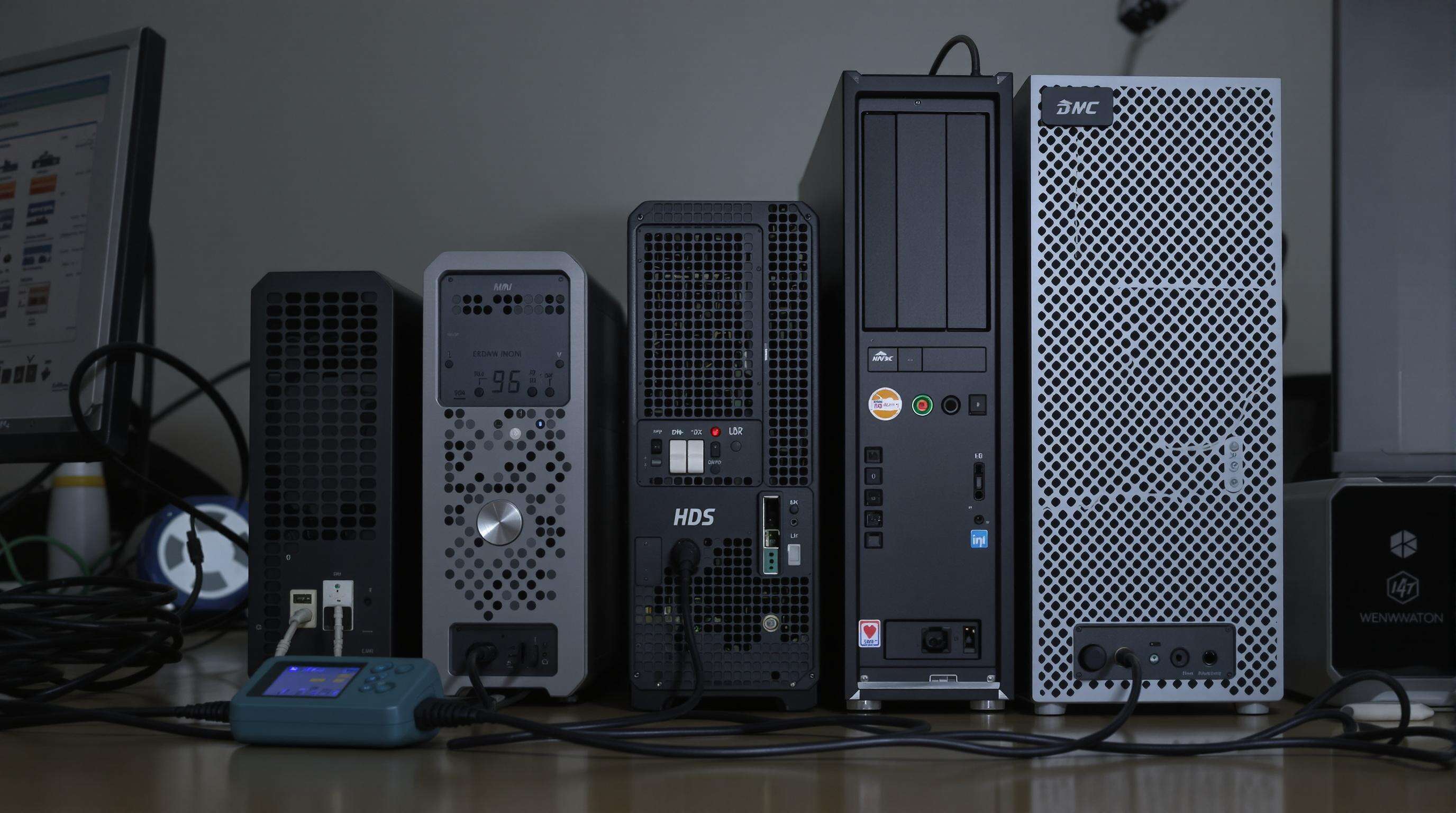Businesses today are caught between trying to cut expenses while also hitting those green goals they all talk about. According to some research from CleanTech Advisory last year, offices and commercial spaces eat up around 40% of the world's energy, and guess what? Our computer setups alone take about 18% of that big number. Enter mini PCs which solve part of this problem. These little guys only need between 15 to 50 watts when running, which is way less than regular desktop computers that guzzle anywhere from 200 to 500 watts. The difference is massive really. Companies adopting these smaller systems not only look better on their ESG reports but also stay ahead of rules such as the EU's Energy Efficiency Directive without breaking a sweat.

The compact architecture of Mini PCs eliminates redundant components while maintaining enterprise-grade performance. Key energy-saving features include:
| Factor | Mini PC | Traditional Desktop |
|---|---|---|
| Idle Power Draw | 5â10W | 80â150W |
| Peak Energy Use | 50W | 500W |
| Annual Energy Cost* | $18 | $180 |
*Based on 2,080 operational hours at $0.12/kWh
This efficiency enables mid-sized companies to save $28,000+ annually on electricity for 300-workstation deployments, while also reducing cooling demands in office environments.
A logistics firm achieved a 62% reduction in IT energy costs after replacing 400 desktops with Mini PCsâequivalent to removing 87 gasoline-powered vehicles from roads annually. Their power consumption dropped from 124,800 kWh to 47,300 kWh yearly, translating to $9,300 in direct savings (Department of Energy 2023 Case Study Archive).
Leading organizations pair Mini PC deployments with cloud-based power management systems, virtual desktop infrastructure (VDI), and dynamic frequency scaling. This holistic approach helped a healthcare provider achieve ENERGY STAR® certification by reducing data center energy intensity by 44% over two years.
School districts report 3-year savings of $127 per Mini PC through:
73% of enterprises now prioritize carbon neutrality in IT procurement (Deloitte 2023), driving demand for systems that support Scope 2 emissions reductions. Mini PCs consume 60â80% less power than traditional workstations while delivering enterprise performance, helping organizations align with Paris Agreement targets.
| Feature | Traditional Desktop | Mini PC |
|---|---|---|
| Power Draw | 200W+ | 18â55W |
| Raw Materials Used | 6.2 kg | 1.8 kg |
| Recyclable Components | 42% | 79% |
Data: IT Sustainability Benchmark Report 2024
By consolidating computing into smaller form factors, mini PCs eliminate redundant parts and use advanced thermal management to reduce energy waste. Their modular design enables 92% material recovery during recycling, compared to 58% for conventional PCs.
A 12-month study across 23 corporate offices found mini PCs reduced annual CO2e emissions by 4.2 metric tons per 100 devicesâequivalent to removing 9 gasoline-powered vehicles from roads (EPA equivalency calculator). Real-time monitoring helps track progress toward RE100 renewable energy goals.
Financial institutions reduced datacenter cooling costs by 37% after switching to mini PC arrays, achieving 82% improvements in power utilization effectiveness (PUE). This supports Science-Based Targets initiative (SBTi) validation by demonstrating measurable reductions in operational emissions intensity.
69% of CIOs now mandate lifecycle assessments for hardware purchases (Gartner 2024), favoring mini PCs for their 7â10 year service lifespan and TCO 38% below conventional PCs. Manufacturers respond with EPEAT Gold-certified models using 89% post-consumer recycled materials, reinforcing sustainable procurement across industries.
We're talking about around 53.6 million metric tons of electronic waste produced worldwide each year according to the Global E-Waste Monitor from 2023, and old computers make up a big chunk of that stuff ending up in landfills filled with toxins. Mini PCs offer a solution here because they're built to be energy efficient and last between 12 to 15 years, which is actually three times longer than regular desktop computers typically manage. What sets them apart from those throwaway laptops with their sealed parts is that mini PC systems can be taken apart and reused in various ways. Companies have found that this approach cuts down on electronic waste by about 34% when implemented properly in business settings across the board.

Mini PCs feature standardized components like SODIMM RAM slots and M.2 SSD bays that enable:
A multinational bank achieved a 62% reduction in PC-related e-waste by deploying upgradable mini PCs across 1,200 branches. Biennial SSD and RAM upgrades extended device usability over 8 fiscal years while maintaining PCI-DSS compliance.
Traditional consumer devices lose 87% of their residual value within 36 months due to non-repairable designs (Circular Electronics Initiative 2022). In contrast, mini PCs retain 45â50% resale value after five years through standardized upgrade paths, fostering secondary markets that divert functional hardware from landfills.
Leading manufacturers now use 94% recycled aluminum in mini PC chassis and modular power supplies rated for 10+ years. These innovations support closed-loop production models where 92% of materials are reused across product generationsâadvancing the goal of zero-waste IT infrastructure.
More and more businesses are starting to see Mini PCs not just as gadgets but as real game changers when it comes to hitting those climate targets. According to a recent 2023 study looking at big corporations on the Fortune 500 list, around two thirds of them have actually started incorporating low power computing into their green plans. This trend makes sense given how these companies want to check boxes related to both fighting climate change and pushing industrial innovation forward. The numbers tell the story too modern day Mini PCs typically run between 8 to 15 watts, which is dramatically less than what traditional desktops consume at over 150 watts. This means significantly lower carbon footprints from electricity use while still getting all the work done efficiently.
Mini PC architectures support SDG 7 (Affordable Clean Energy) through three innovations:
| Metric | Improvement | SDG Alignment |
|---|---|---|
| Annual Energy Use | -62% | SDG 13 |
| E-Waste Generation | -79% | SDG 12 |
| IT Refresh Costs | -41% | SDG 8 |
The deployment extended hardware lifespan from 3 to 7 years through modular upgrades, demonstrating scalable climate action in financial services.
Forward-thinking organizations evaluate PC purchases through an SDG lens:
Mini PCs typically use between 15 to 50 watts, compared to traditional desktops that consume between 200 to 500 watts. This represents significant energy savings.
Mini PCs are designed to be modular and repairable, extending their lifespan to 12 to 15 years. They also reduce e-waste by approximately 34% through reuse and recycling.
Mini PCs can lead to significant cost savings. For example, mid-sized companies could save over $28,000 annually on energy costs for a 300-workstation deployment.
